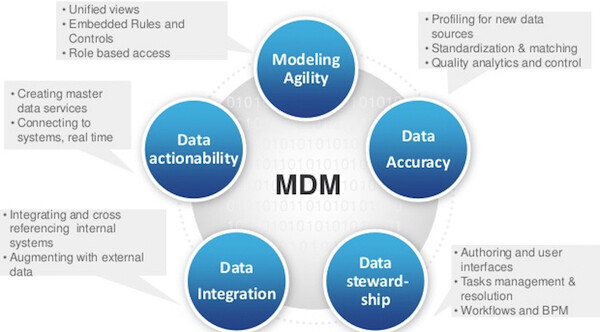Is MDM required when dealing with real time data?

In today’s day and age, in order to deliver a great customer experience it is essential and critical for any business to get a competitive edge. Many organizations, dealing with large amounts of data, are known to face complexity and challenges when required to deliver the best customer experiences. The variety of data source extends from in-person transactions, to phone, email, and many other traditional channels right up to the more technology oriented communication channels that include the web, social media, mobile apps, and many more. Different and updated versions of the Product and customer data are changing constantly. Hence a comprehensive, modern big data infrastructure that includes all types of internal and external data that is collated, organized, analyzed, and applied at every customer interaction has been an emerging point. But, given the constant change when dealing with real time data, the problem arises whether or not to maintain a single source for the master data?
Why Master Data?
Since a long time, there has been great emphasis on regulatory compliance, Service-Oriented Architecture (SOA), and Software as a Service (SaaS) along with mergers and acquisitions, which makes the creating and maintaining of complete master data a business imperative.
Data is spread out in many forms:
- Unstructured—Data found in e-mail, white papers, corporate intranet portals, product specifications, marketing collateral, and PDF files.
- Transactional—Curcial when mergers & acquisitions take place- data related to sales, deliveries, invoices, trouble tickets, claims, and other monetary and non-monetary interactions.
- Metadata—also crucial for regulatory compliance and mergers & acquisitions -data that resides in formal repositories
- Hierarchical— This includes company organizational structures or product lines and crtical for the business functioning of the company
Combining all these types of data we create the Master Data which has a wide spread and can include people information like customer, employee, sales individuals; things – can include products, assets; and concepts – includes contracts, licences etc..
Each business will have their own categorization of what they term as master data depending on the kind of business they do, the processes they follow and the workflows involved. The healthcare business may find the need to maintain very different kind of master data as that from the information technology business.
So why should all this data be vital for the functioning of any organization, especially when the more updated data is relevant and essential for customer satisfaction?
It is very important because data is constantly being used by multiple applications for processing information and an error in the most recent data entry can cause errors in all the applications that use it, since it may super impose on the master data. For example just if an incorrect address as such an email address, has been entered into the customer updated data account, the consequences can be a major disaster for many departments- marketing, accounts, and delivery- thereby leading to a waste of time and unnecessary resource. And if this keeps getting updated it definitely will spell doom and the loss of a customer.
Furthermore, without a clearly defined master data, the enterprise runs the risk of having multiple copies of data that are inconsistent with one another.
This is where the need for a “data warehouse” comes into the picture. Usually, in any given data warehouse, the usage of the master data is basically for applications that have access to the data warehouse directly. This depends on a variety of factors that are specific to the organization, like the size of the data, the applications in use, how easy it is to source the data and most of all how costly it is to modify the source system. This last point on the economics of keeping a single source of data, given the updates and versioning, is very crucial to most companies due to compliance and also customer satisfaction.
In conclusion, there is always a need to maintain a single source of master data, even in today’s constantly changing social media environment, as it imparts information that can be very useful for the company when dealing with customer satisfaction.
In our next blog we will talk about how this plays out, to have a better understanding of why this master data, residing at a single source is essential, even though it may look like a costly affair.